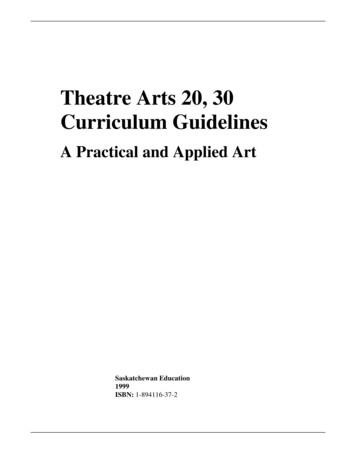
Transcription
Theatre Arts 20, 30Curriculum GuidelinesA Practical and Applied ArtSaskatchewan Education1999ISBN: 1-894116-37-2
AcknowledgementsSaskatchewan Education acknowledges the contributions of the Practical and Applied Arts Reference Committee formed in 1996.Current members are:Jerry Cherneski, InstructorSIAST Palliser CampusDean Lucyk, TeacherRegina RCSSD #81Saskatchewan Teachers' Federation (STF)Saskatchewan Industrial Education Association (SIEA)Barbara McKinnon, TeacherMoose Jaw S.D. #1Saskatchewan Teachers' FederationSaskatchewan Business Teachers’ Association (SBTA)Lance Moen, DeanAssociated StudiesSIAST Kelsey CampusRose Olson, TrusteeSaskatchewan School Trustees Association (SSTA)Dr. Len ProctorProfessor, College of EducationUniversity of SaskatchewanDr. Kevin QuinlanProfessor, Faculty of EducationUniversity of ReginaDave SpencerSwift Current S.D. #94League of Educators, Administrators, Directors andSuperintendents (LEADS)Gayleen Turner, TeacherSwift Current Comprehensive High School BoardSaskatchewan Teachers' FederationSaskatchewan Home Economics Teachers’ Association(SHETA)Ron Wallace, ConsultantSaskatoon S.D. #13Saskatchewan Teachers' FederationSaskatchewan Career/Work Experience Association (SCWEA)Previous Members:Susan Buck, SIASTLaurent Fournier, SSTARon ProvaliTeacher/PrincipalPotashville S.D. #80Saskatchewan Teachers’ FederationSaskatchewan Association of Computers in Education (SACE)Morris Smith, LEADSDebbie Ward, SSTASaskatchewan Education wishes to thank many others who contributed to the development of these guidelines: Garnet Colborne and Russ Ramsden, contracted/seconded developers/writers, Saskatoon S.D. #13David Zulkoskey, seconded/contracted developer/writer, Saskatchewan Rivers S.D. #119the PAA Program Teamother Saskatchewan Education consultantsfield test/pilot teachersother field personnel.This document was completed under the direction of the Science and Technology Unit, Curriculum and Instruction Branch,Saskatchewan Education.i
Table of ContentsAcknowledgements. iIntroduction.1Philosophy and Rationale .1Aim, Goals, and Foundational Objectives.1Common Essential Learnings .2Course Components and Considerations .2Course Description.3Course Overview.4Theatre Arts Course Description.5Module 1: Introductory Orientation (Core) .5Module 2: Set Design (Core) .8Module 3: Stage Lighting (Core) .11Module 4: Stage Sound and Video (Core) .13Module 5: Stage Properties (Core).15Module 6: Costume (Core).17Module 7: Make-Up and Hair (Core).19Module 8: Stage Management (Core) .21Module 9: Working A Show: Preparation and Follow-up (Core) .22Module 10: Advanced Orientation (Core).25Module 11: The Production Manager (Optional).26Module 12: Set Design and Construction (Optional) .27Module 13: Lighting Design and Production (Optional).28Module 14: Sound Design and Production (Optional) .30Module 15: Property Design and Management (Optional) .31Module 16: Costume Design and Construction (Optional) .32Module 17: Make-Up Design and Application (Optional).34Module 18: Stage Management (Optional) .35Module 19: House Management (Optional) .36Module 20: Publicity (Optional) .37Module 21: Practical Application: Working a Production (Core).38Module 22A, 22B: Work Study (Optional).39References .40Appendix A: Recordkeeping Charts.41Appendix B: Properties And Qualities Of Light Affect Perception.42ii
Stage Lighting Design: How To Do It.44Source And Angle Of Lighting Sources .44McCandless Theory Of Lighting.44Stage Lighting Mechanics .46Appendix C: Flow Chart of Major Roles.47iii
IntroductionWithin Core Curriculum, the Practical and Applied Arts (PAA) is a major area of study that incorporates five traditional areasof Home Economics Education, Business Education, Work Experience Education/Career Education, Computer Education,and Industrial Arts Education. Saskatchewan Education, its educational partners, and other stakeholders have collaborated tocomplete the PAA curriculum renewal. Some PAA curriculum guidelines have been updated; some components have beenintegrated, adapted, or deleted; some Locally Developed Courses have been elevated to provincial status; and some newguidelines have been developed.A companion Practical and Applied Arts Handbook provides background on Core Curriculum philosophy, perspectives, andinitiatives. The handbook provides a renewed set of goals for PAA. It presents additional information about the PAA area ofstudy, including guidelines about work study and related transition-to-work dimensions. In addition, a PAA InformationBulletin provides direction for administrators and others regarding the implementation of PAA courses. Lists ofrecommended resources for all guidelines will be compiled into a PAA Bibliography with periodic updates.Philosophy and RationaleTheatre Arts 20 is an introductory course for students of technical theatre. As such, it asks the students tobecome familiar with the technical roles of the theatre, the principles of stage lighting, sound, set/stagedesign, makeup, and wardrobe. Further, it begins the process of familiarizing the students with themechanical and technical skills involved in each of these areas of the theatre.Theatre Arts 30 takes the students into the areas of design for each of the elements of theatre introduced inTheatre Arts 20. It allows the students to work on more complex technical aspects of design and functionand, ultimately, to become department and crew chiefs for actual school or community productions. Theother main consideration in Theatre Arts 30 is to provide students with the opportunity to specializesomewhat in a particular area of technical theatre arts. Individual contracts and independent learningopportunities provide a means to adapt the course to meet the needs of a diverse student audience.The work study aspect of each course (Theatre Arts 20, 30) provides students the opportunity to work on anactual production, either as a crew member or as production or crew chief.Aim, Goals, and Foundational ObjectivesAimThe aim of these two courses is to teach students to perform the tasks of “backstage” designers, managers, and crews; to helpstudents understand the most effective and efficient ways of accomplishing those tasks; and, to promote an appreciation forthe creative abilities and technical skills necessary to do these tasks. Students will understand that these “backstage” tasks areequal to, but different from, that which happens on stage.GoalsThe general goals of the Theatre Arts 20, 30 courses are:Awareness: To provide students with an awareness of the creative possibilities and practical hands-on learning needs in thetheatre.Transition from School to Work: To create a connection for students between theatre in the school and theatre in thecommunity as a opportunity to establish a career pathway.Community Involvement: To foster a sense of cooperation and interdependence between the school and the community.1
Communication: To develop social and communication skills as practitioners and potential employees in the theatre.Employability Skills: To encourage the development of employability skills such as cooperation, initiative, risk taking, andcreativity in the theatre.Personal Management Skills: To enhance students’ confidence, self-worth, and ingenuity both in the theatre and in thecommunity.Foundational ObjectivesFoundational objectives are the major, general statements that guide what each student is expected to achieve for the modules ofthe PAA curriculum guidelines. Foundational objectives indicate the most important knowledge, skills, attitudes/values, andabilities for a student to learn in a subject. Both the Foundational Objectives for Theatre Arts 20, 30 and the Common EssentialLearnings (CELs) Foundational Objectives to be emphasized are stated in this document. Some of these statements may berepeated or enhanced in different modules for emphasis. The Foundational Objectives of the Core Modules of the Theatre Arts20, 30 curriculum include: To recognize and appreciate the collaborative process involved in a theatre production.To understand and apply the fundamentals of theatre and theatre productions.To participate in and appreciate the importance of the planning phase of a theatre production.To appreciate the importance of clear communication in theatre production.To develop the artistic abilities and technical skills required in a theatre production.To experience the enjoyment and fulfillment derived from interacting with others and from the creative process ofworking on a production.To take responsibility for specific tasks in planning for and production of theatre.To practise both good leadership and good “followership” skills.To access and use community and other resources.To identify and practise safety precautions and procedures.To understand the roles and responsibilities of production personnel.To be aware of career and employment opportunities related to theatre.Common Essential LearningsBoth Theatre Arts 20 and 30 encourage a full incorporation of the Common Essential Learnings.The incorporation of the Common Essential Learnings (CELs) into the instruction of the Practical and Applied Arts (PAA)curriculum offers many opportunities to develop students’ knowledge, skills and abilities. The purpose of the CELs is to assiststudents with learning concepts, skills, and attitudes necessary to make the transition to career, work and adult life.The CELs also establish a link between the Transition-to-Work dimensions and Practical and Applied Arts curriculumcontent. The Transition-to-Work dimensions included in the PAA courses are: apprenticeship, careerexploration/development, community project, employability skills, entrepreneurial skills, occupational skilling, personalaccountability, processing of information, teamwork, and work study/experience. Throughout the PAA Curricula, the CELsobjectives are stated explicitly at the beginning of each module and are coded in this document, as follows:COMNUMCCTTLPSVSIL CommunicationNumeracyCritical and Creative ThinkingTechnological LiteracyPersonal and Social Values and SkillsIndependent LearningIt is anticipated that teachers will find additional ways to incorporate the CELs into their classroom instruction.Course Components and ConsiderationsTheatre, by its very nature, is eclectic, involving many elements simultaneously. Thus, it is no surprise that the foundational2
objectives and learning objectives of these courses so readily correspond with many of the CELs.Resources supporting the foundational and learning objectives of the curriculum have been identified. The teacher mustremember that these are only beginnings--a place to start. Much of the success of this course depends on the teacher's use ofher or his own skills, interests, and enthusiasms. It is also recommended that the teacher make use of the talents and expertiseof colleagues. The teacher may also make use of community resources, such as amateurs and experts in the theatrical field, toseek advice in the creation and delivery of these courses. Field trips, job shadows, career interviews, and “spend-a-day in aworkplace” are all examples of community resource use. If there is a theatre company in the town, city, or school division,the arrangements can be reciprocal: outside experience and expertise in exchange for students able and willing to work inproductions of that outside group. The students will benefit, the program will benefit, and the community theatre will benefit.Teachers of Theatre Arts 20 and 30 classes are strongly encouraged to develop educational links or partnerships with amateurand professional theatre groups in their community. These contacts could provide invaluable opportunities for students toexperience the practical dimensions of theatre.The most important modules in both Theatre Arts 20 and 30 provide students with work study opportunities. The work studymodules allow students to work on an actual production, either as a crew member or as production or crew chief. Thesemodules are meant to be hands-on, useful, enjoyable, creative, and purposeful.Course DescriptionTheatre Arts 20 is an introductory course. Students become familiar with the technical elements of the theatre, such as theprinciples of stage lighting, sound, set construction, make-up, and wardrobe. Further, students become familiar with thetechnical skills involved in each of these areas of the theatre.Theatre Arts 30 introduces students to the areas of design for each of the elements of the theatre. It allows the students towork on more complex technical aspects of design and function and, ultimately, become department and crew chiefs forschool or community productions. It also provides students with the opportunity to specialize somewhat in a particular areaof technical theatre. For instance, the teacher may wish to focus on the wardrobe module for some students with a keeninterest in that area, while at the same time exempting those students from the module on properties management or someother module that is not of particular interest to them. The teacher may even wish to deal with a large portion of Theatre Arts30 through individual contracts with students. These choices however, apply only to optional modules within the course ofstudy.3
Course OverviewModule THEA17THEA18THEA19THEA20THEA21THEA22A, 22BModulesTheatre Arts 20Introductory Orientation (Core)Set Design (Core)Stage Lighting (Core)Stage Sound and Video (Core)Stage Properties (Core)Costume (Core)Make-Up and Hair (Core)Stage Management (Core)Working a Show: Preparation and Follow-up (Core)MinimumTheatre Arts 30Module 10: Advanced Orientation (Core)Module 11: The Production Manager (Optional)Module 12: Set Design and Construction (Optional)Module 13: Lighting Design and Production (Optional)Module 14: Sound Design and Production (Optional)Module 15: Property Design and Management (Optional)Module 16: Costume Design and Construction (Optional)Module 17: Make-Up Design and Application (Optional)Module 18: Stage Management (Optional)Module 19: House Management (Optional)Module 20: Publicity (Optional)Module 21: Practical Application: Working a Production (Core)MinimumModule 22A, B: Work Study (Optional))Module 1:Module 2:Module 3:Module 4:Module 5:Module 6:Module 7:Module 8:Module 9:Suggested heatre Arts 20 is divided into 9 modules. Each module identifies a suggested number of instructional hours, foundationalobjectives, learning objectives, suggested teaching approaches, and student activities. The first module -- Orientation -- ispresented in more detail as a sample unit. If the Work Study module is used for both courses, then THEA22A is for grade 11and THEA22B is for grade 12.4
Theatre Arts Course DescriptionModule 1: Introductory Orientation (Core)Suggested time: 4-6 hoursFoundational Objectives To understand the fundamentals of theatre and theatre productions. To identify and practise safety precautions and procedures.Common Essential Learnings Foundational Objectives To understand and use the vocabulary related to theatre. (COM)Note: Other CELs may be emphasized.Learning Objectives1.1 To understand the interdependance ofthe various positions on a productionteam and to appreciate the necessity ofhaving ‘company’ rules and procedures.NotesIn groups, students brainstorm a list of all the jobs in the theatre.Follow this with a brief class discussion to achieve agreement on the list ofjobs and job titles.Groups organize the positions into a meaningful flowchart that displays therelationships and interdependance of the various theatre jobs. These jobscould be organized under the headings of director, stage manager, productionmanager, and house manager.1.2 To describe the basic jobs of productionpersonnel. (COM)Each group presents its flowchart and rationale. Class discussion follows.Discuss the similarities and differences in the organization of school,community, and professional theatre.Dealing with the job descriptions, the teacher leads a class discussion on thevarious production roles and relationships adapting them to suit that particularschool's situation. Teachers should encourage students to develop a teamapproach and encourage respect for both actors and production personnel.The following key positions for theatre production are to be examined by thestudents in their discussions: director house manager publicity personnel box office staff stage manager running crew production manager set designer technical director light crew sound crew wardrobe crew make-up crewDuring the course of the class, additional positions may be added to the corejob grouping.5
Learning ObjectivesNotes1.3 To develop a working knowledge (of aglossary) of theatre terms.Throughout the course, teachers are encouraged to use and help students usethe appropriate vocabulary used by professionals in the theatre arts.1.4 To explore the characteristics ofcommon stage configurations and applythem to the students’ own schoolfacility. (TL, CCT)Distribute diagrams of the three most common stage configurations: arena,thrust, and proscenium.Explain the features of each stage type and lead a discussion on theadvantages and disadvantages of each stage, both for actors and for productionpersonnel.Conduct a tour or show pictures of a school or community or professionaltheatre (e.g., Stratford (Ontario), Persephone (Saskatoon) or Globe (Regina))or area that is (or can be) used for theatre productions. Use the glossary topoint out features of the stage, the house, and the backstage areas. Withstudent input, observe and discuss similarities and differences between yourfacility and the theatre models. What opportunities and challenges does theschool's space present to a production team? Brainstorm ideas for possiblespaces for different stages in your school or community. These spaces couldbe interior or exterior.Measure and record the dimensions of your own theatre space. Design a scalemodel of the stage or other stages in your community or neighbouring school.Students should use the following terminology: above, acting area, apron,arena, theatre, backdrop, backstage, cyclorama, down stage, flexible, front ofhouse, in the round, onstage, off stage, proscenium, tormentors, teasers, stageleft, stage right, upstage, travellor, thrust stage, wings.1.5 To understand the principles of theatresafety.Students should explore the safety issues related to stage type and its location.List a variety of considerations. Teachers should provide outlines for safetyincluding: fire, electrical, air quality, physical space requirements, guidelinesfor stage requirements (stage height, depth, lighting placement, electricalrequirements).Based on the activities and understandings achieved above, groups of studentsshould discuss and prepare simple safety manuals for working in the school’stheatre area. They may consider students performing tasks while onmedication or the need to work in well ventilated areas. Each group shares itsresults.Guide the class in creating a common safety manual for all to follow.Refer to the Safety Guidelines in the Practical and Applied Arts Handbook.6
Learning Objectives1.6 To reflect on and evaluate one’sunderstandings and learningexperiences. (PSVS)NotesStudents should be required to keep a learning log (theatre log) ofunderstandings, experiences, tasks, hours worked outside structured classtime, and their personal reflections on all these activities. Such a log shouldbe submitted at regular intervals and may be used as part of the student’sevaluation.7
Module 2: Set Design (Core)Suggested time: 15-20 hoursFoundational Objectives To develop the technical skills required in a theatre production. To identify and practise safety precautions and procedures in the theatre.Common Essential Learnings Foundational Objectives To provide opportunities for students' active involvement in decision-making related to technological developments. (TL)Note: Other CELs may be emphasized.Learning ObjectivesNotes2.1 To develop an awareness of illusionson stage. (TL, IL).Consider: the different types of plays and their locale demands of the script for various plays interpretation of the director desired results styles of sets (realistic sets, suggested sets, period sets).2.2 To build model sets.Divide students into groups of 2-4. Students will create a working model of onestyle of set:a) realistic set - construct box setb) suggested set - outdoor scene, street scene or forest scenec) period set - Greek, Medieval, Elizabethan, Restoration or Modern.For each style, students should consider:The Box SetFocus on: demands of the script demands of the stage and/or acting space sight lines – effect elevations - purpose: to show decorative detail depth and breadth of stage - effect wing space effect and location of lighting instruments.Students build a shoebox set for a given single-set play. Foam Core is veryuseful for this activity.Flat ConstructionConsidered the following: framing a basic 4x8 flat framing a door flat framing a window flat covering a flat anchoring and combining flats to create a box set safety.Under teacher leadership, build any or all of the flats listed.8
Learning ObjectivesNotesWith the aid of a computer, students could expand their preliminary sketchesand model sets into a fully developed design.2.3 To construct a piece of stage scenery.Various types of scenery are divided into two groups: two dimensional andthree dimensional.Divide the students into groups to construct scenery construction. As anexample of two dimensional scenery construction, students may construct thefollowing: standard wooden flat (4 x 8) door flat or window flat flat with profile edges; e.g., bush or tree.As an example of three-dimensional scenery construction, students mayconstruct: tressel frame platform slanted platform or ramp stairs with at least three steps rock form column or tree trunk.2.4 To decorate a piece of stage scenery.In order to make elements of a set look as if they belong to the play, scenicartists use paint. Develop an awareness of various kinds of scenic paint andcolour. Students could choose one element of the set: wall, furniture, rock,floor, or a tree and make it look like it belongs in the play. Using colour andtexture techniques, create a finished product.Discuss set decoration including: making and mixing set paints painting techniques brush roller sponge stenciling textured surfaces (stippling) paper maché spattering special effects ragging on/off smooshing.Consult Interior Design 30 Curriculum Guidelines about Treatment of Wallsand Ceilings.9
Learning Objectives2.5 To understand and practise principlesof theatre safety.NotesCaution should be taken to ensure students are working in well ventilated areas,wearing masks, etc. Determine if students have allergies or are asthma suffersand take necessary precautions.Experiment with making, mixing, and applying set paint by creating miniaturesamples.Discuss safety practices when handling tools and equipment for building anddecorating sets.Consideration should be given to the following: goggles dust masks clothing ventilation gloves fire hazards safe paints and other substances.10
Module 3: Stage Lighting (Core)Suggested time: 10-12 hoursFoundational Objectives To develop the technical skills required in a theatre production. To practise both good leadership and good “followership” skills. To identify and practise safety precautions and procedures.Common Essential Learnings Foundational Objectives To explore implications of present technology and the use of technological developments within theatre arts. (TL)Note: Other CELs may be emphasized.Learning Objectives3.1 To understand, operate and maintainlighting equipment. (TL, COM)NotesDefine the following lighting terms: back light barn doors, backout, c-clamp,colour medium, dimmer pack, fade, fill light, gobo, house lights, work lights.Include: types and functions of instruments fresnels leikos (ellipsoidals) floods/scoops follow spots strip lights care and maintenance wiring/plugs lenses bulbs shutters/irises/barn door safety.Students disassemble and reassemble school lighting instruments, includingwiring plugs.3.2 To demonstrate how to operate alighting control system.Deal with: circuits patch/preset boards dimmers dimmer control board safety the cue sheet.Students study and learn the operation of the school's lighting system.Students may participate in a lighting rehearsal under the direction of atechnician.11
Learning Objecti
the PAA curriculum guidelines. Foundational objectives indicate the most important knowledge, skills, attitudes/values, and abilities for a student to learn in a subject. Both the Foundational Objectives for Theatre Arts 20, 30 and the Common Essential Learnings (CELs) Foundational Objectives to be emphasized are stated in this document.
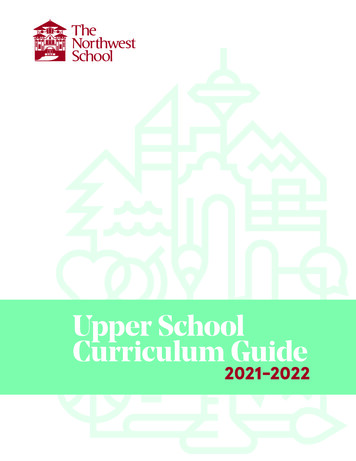
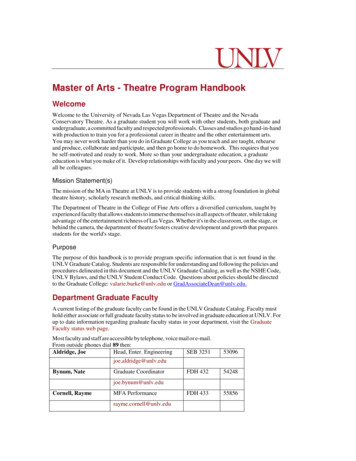
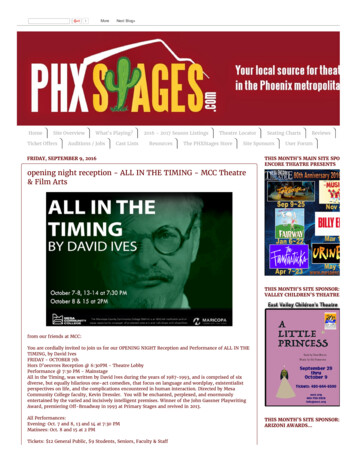

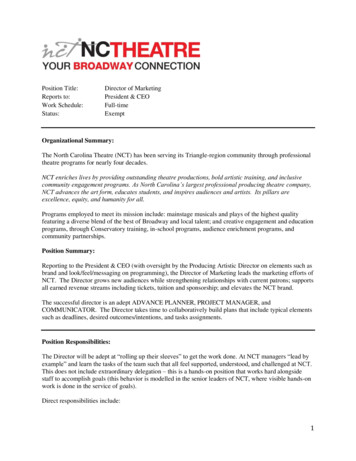

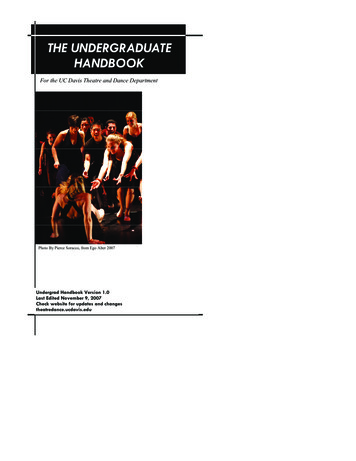
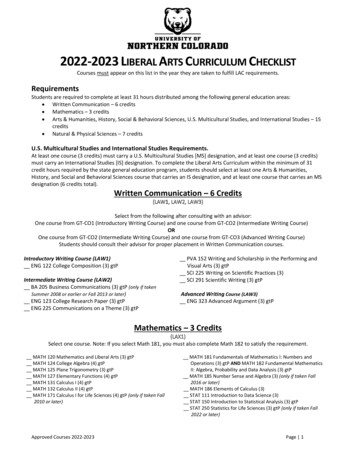
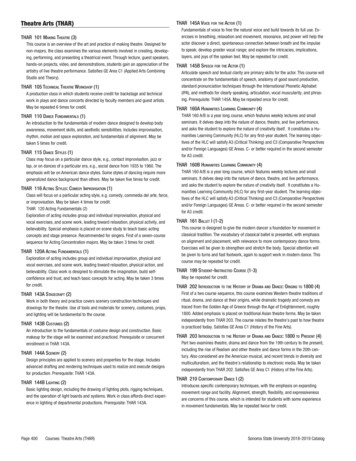
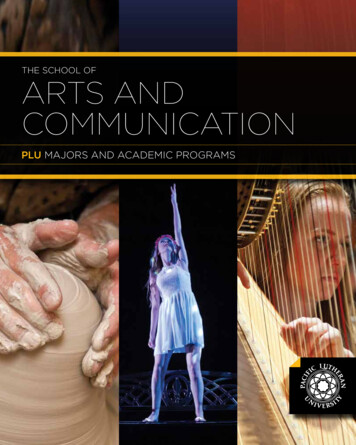

![Nigerian Popular Theatre Alliance [NPTA] Further Dimension in . - HRMARS](/img/26/nigerian-popular-theatre-alliance-npta-further-dimension-in-trends-of-alternative-theatre-practice-i.jpg)